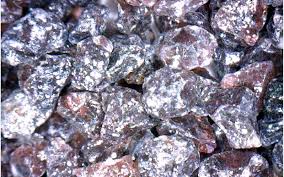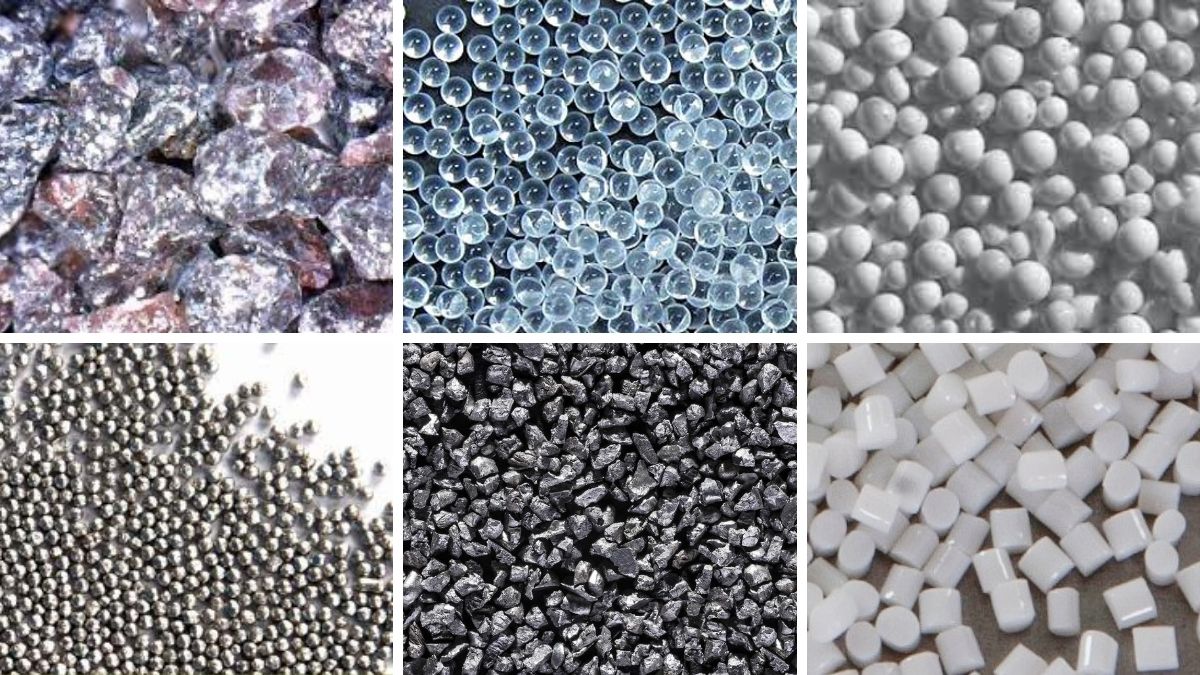
Wet Blasting Equipment & Media, Part 5 – Careful Media Selection, Additive Use Impact Results
, sramaker - Zurück zur Übersicht
Wet blasting and dry shot blasting often use similar media to achieve the desired processing result.
Unlike dry blasting that only uses a solid abrasive media, wet blasting processes use a slurry of water with the shot blasting media. This greatly cushions the impact energy on the work pieces, providing gentler, yet effective results for delicate work pieces. The achieved surface finish and appearance will also differ between wet and dry processes, even when the same media type and size are used.
With more than 80 years of experience worldwide, Rosler can supply both the machines and media best suited for your wet blasting needs.
Common Media Types
As long as it is heavier than water and not water soluble, practically any media used for dry blasting can be used for wet blasting.
It is important to consider the usefulness of the media compared to its cost. While a cheaper or longer-lasting media may be available, it may also require additional processing time to accomplish the desired surface finishing. Selecting the most appropriate media for your process requires balancing initial costs with overall results.
Common types of wet blasting media include (top, from left) brown, white, and pink fused aluminum oxide; glass beads, ceramic beads, (bottom, from left) stainless steel shot, stainless steel grit, and polycarbonate beads.
The most common wet blast media include:
- Brown, white, and pink fused aluminum oxide – Widely used for blast cleaning, this media type’s hardness makes it ideal for surface cleaning and paint preparation.
- Glass beads – Useful in wet cleaning and light peening applications, glass beads can also be used for light deburring and cosmetic blasting.
- Ceramic beads – This media’s high bulk density produces a higher impact intensity than glass beads and is useful for general surface cleaning and shot peening. The spherical beads provide a bright matte finish.
- Stainless steel shot – While useful in special cleaning and shot peening applications, this media type is not suitable for non-ferrous, soft metals.
- Stainless steel grit – The high bulk density and angular shape of this media produces an excellent cleaning effect, but is not suitable for non-ferrous, soft metals.
- Polycarbonate beads – This media is useful for very gentle cleaning applications and cosmetic blasting.
Water Additives
Rosler offers a wide selection of additives and compounds.
The addition of certain chemical additives to the process water will support the wet blasting process and help extend the usable life of the process water.
Popular additives in wet blasting processes include:
- Degreasing compounds – These surfactants chemically augment the mechanical cleaning effect of the wet blast process. They are only applicable when the work pieces are covered with grease or oil. Heavy contamination must be removed before wet blasting.
- Corrosion protection compounds - Such compounds provide temporary corrosion protection for a few days on ferrous work pieces.
- Biocides – These additives prevent bacterial contamination of the process water/slurry. During downtimes and inactivity such as the holidays or weekends, bacteria grows more easily. The addition of a biocide prevents such contaminations and allows process water to be used for longer periods of time before being replaced with fresh water.
- Flocculants – Used for augmenting the cleaning effect of centrifuges, flocculants aid in the removal of contaminants from the process water by encouraging contaminates to “floc” or group together, making the larger pieces of debris easier to remove for the system.
- Water hardeners - If very soft water is used (< 70 mg/L or 4.2 grains per gallon), foaming in the wet blast machine and the filtration system can become an issue. In such cases, a water hardener is useful in eliminating and/or avoiding issues.
The Rosler Way
As the utilization of wet blasting increases, Rosler reminds manufacturers to review their traditional, dry shot blasting applications and consider if wet blasting could provide additional efficiencies, reduced costs, and better results.
We have extensive experience in wet blasting. Whatever your challenges are, we are confident that we can deliver a solution. Contact us to discuss your needs today!
The complete Wet Blasting Equipment & Media series includes:
- Part 1 – “Machines Range in Complexity, Uses.”
- Part 2 – “Technical Components Combine for Systematic Success.”
- Part 3 – “Maintain Slurry Concentrations for Finishing Consistency.”
- Part 4 – “Internal Cleaning, Rebuilds Prolong Machine Lifetime.”
- Part 5 – “Careful Media Selection, Additive Use Impact Results.”

